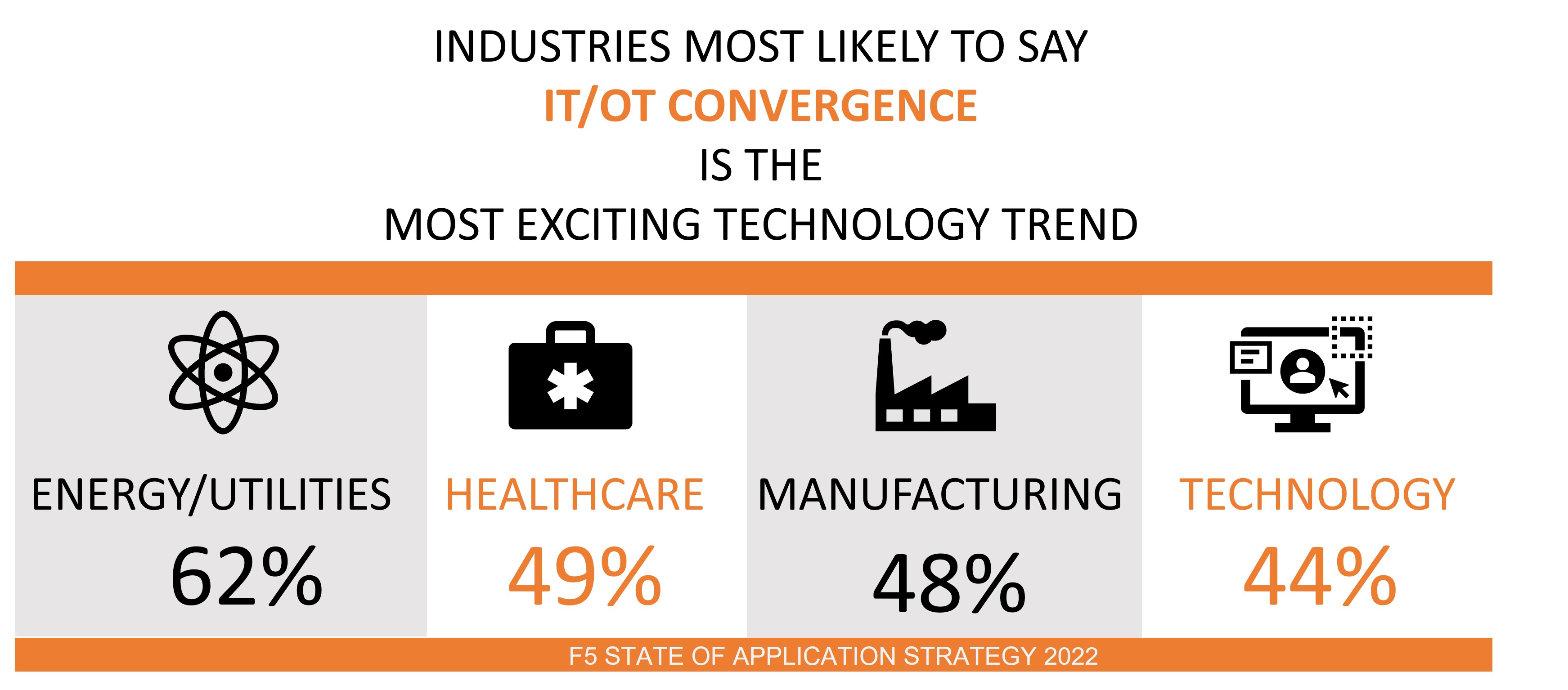La tendance technologique la plus excitante en 2022 : Convergence IT/OT
En seulement deux ans, le nombre d'appareils présents dans un foyer moyen a plus que doublé, passant de seulement dix en 2019 à 25 en 2021, selon une enquête de Deloitte .
J’avoue avoir contribué à cette croissance explosive, étant donné la définition large des « appareils connectés » qui incluent les consoles de jeux. Coupable comme accusé.
Cela inclut un nombre croissant de personnes qui s’appuient sur une variété d’appareils « intelligents » conçus pour renforcer la sécurité domestique, tels que : des capteurs de mouvement, des serrures de porte, des caméras de sécurité et des dispositifs de prévention des risques comme des capteurs d’eau ou de fumée. Environ 12,17 % des foyers dans le monde étaient « intelligents » en 2021. Selon les prévisions de Statista sur le sujet , ce chiffre devrait atteindre 21,09 % d'ici 2025.
Cette convergence de la sécurité physique et numérique est révélatrice de la tendance technologique plus large de convergence IT/OT. Bien que nous ayons généralement tendance à considérer l’OT (technologie opérationnelle) comme étant des machines industrielles associées à la fabrication ou à des générateurs d’énergie critiques dans le secteur de l’énergie, la réalité est que les systèmes de contrôle numérique pour les appareils physiques sont quelque chose que chaque entreprise est susceptible d’utiliser.
Lorsque nous avons demandé au marché quelle tendance technologique les enthousiasmait le plus en 2021, la réponse était, de manière assez surprenante, la convergence IT/OT.

Ce qui n’est peut-être pas surprenant, ce sont les secteurs qui sont les plus enthousiasmés par cette convergence de l’IT et de l’OT. Les secteurs de l’énergie et des services publics, bien entendu, ainsi que le secteur manufacturier, ont tous deux indiqué un niveau élevé d’enthousiasme pour la convergence IT/OT. Mais c’est également le cas des entreprises du secteur de la santé et, curieusement, des entreprises technologiques.

Étant donné que la convergence IT/OT est une fusion des systèmes qui gèrent et contrôlent le physique avec ceux qui gèrent et contrôlent le numérique, ces résultats ne devraient pas être aussi surprenants qu’ils l’ont été. Après tout, la plupart des organisations disposent d’un portefeuille solide composé des deux types d’actifs, que nous le reconnaissions immédiatement ou non.
Les systèmes CVC sont, par exemple, des technologies opérationnelles. Il en va de même pour les serrures numériques et les ascenseurs du siège de F5. Quand vous allez au bureau, aucun bouton ne demande à être poussé. Un système entièrement contrôlé par des mécanismes numériques liés aux mêmes règles qui régissent votre accès aux ressources numériques. La convergence réunit ces deux univers, avec ses avantages et ses risques.
Considérez les rapports selon lesquels , lors de la panne largement médiatisée de Facebook en 2021, les employés n’ont pas pu accéder aux salles de conférence et aux bâtiments. Ce n’est certainement pas incroyable. La plupart des entreprises technologiques confirmeraient que, dans un environnement IT/OT hautement intégré, les systèmes qui contrôlent l’accès à tout, des ascenseurs aux portes, pourraient être affectés négativement par les pannes de réseau et de système.
Les professionnels qui évoluent dans le monde OT reconnaissent déjà la nature sensible de la technologie opérationnelle et le besoin accru de sécurité pour de nombreux systèmes et appareils relevant de leur compétence. Il n’est pas surprenant que les acteurs du secteur de la sécurité soient à l’avant-garde de la compréhension des implications à long terme de la convergence IT/OT sur la sécurité globale, non seulement de l’informatique et de l’entreprise, mais également des consommateurs et des clients. Rappelons que c’est grâce à un système CVC connecté que les attaquants ont pu pénétrer dans les systèmes de Target en 2014.
C’est pourquoi l’enthousiasme autour du Zero Trust représente un signe positif. Avec la convergence de l’IT et de l’OT, et l’unification de leurs systèmes et données, vous devrez maîtriser l’accès aux ressources, qu’elles soient physiques ou numériques.
Les conséquences de la convergence croissante IT/OT sont perceptibles dans notre recherche annuelle sur l’essor de la sécurité centrée sur l’identité et la valeur croissante accordée au contrôle d’accès pour tout, mais surtout pour les API. Ce qui rend l’enthousiasme suscité par la protection des applications Web et des API (WAAP) un résultat prévisible.
La convergence IT/OT réunissant les deux côtés de l’IT, il deviendra nécessaire de disposer d’un moyen plus complet, et probablement unifié, de sécuriser l’accès, que ce soit par console ou CLI, via une application ou une API. Et cela signifie en fin de compte sécuriser les applications contre les attaques, les abus et les utilisations abusives, quel que soit le côté de la barrière IT/OT où elles se trouvaient.
